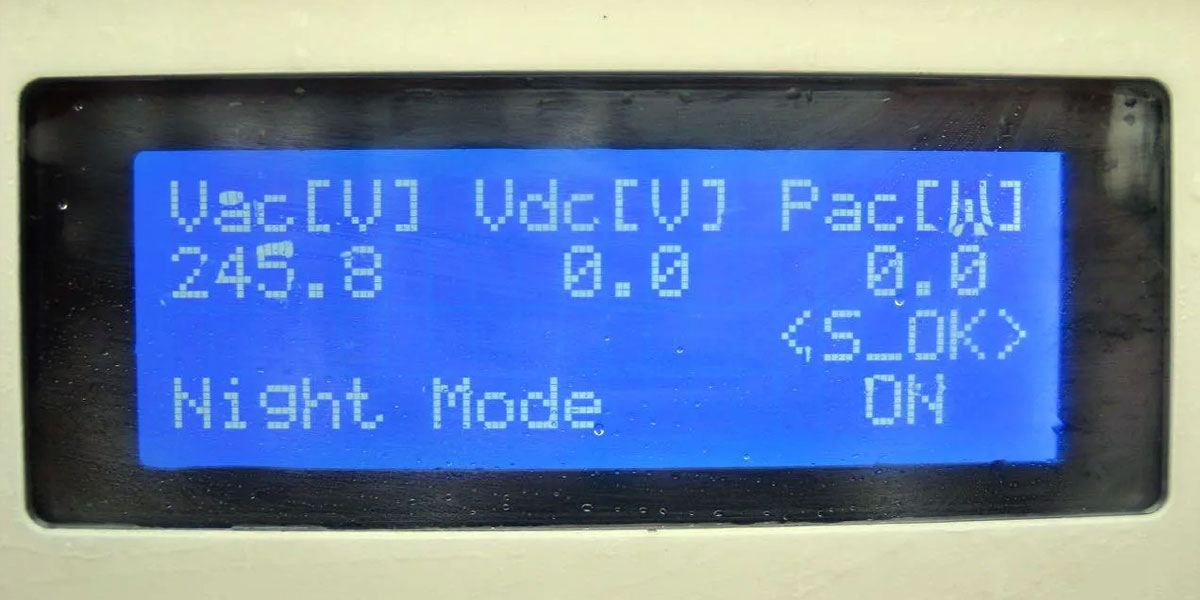SolarEdge Night Mode

Night Mode is a feature on SolarEdge inverters that is designed to save energy and increase system safety. In this article, we’ll explore how it works, how to troubleshoot it and some of the benefits of using it.
What does night mode mean on SolarEdge inverters?
The SolarEdge inverter will shift into night mode or become inactive when it senses a lack of light. The common causes for this are night time, snowfall, and large objects blocking the sun. At this point, the inverter will stop producing power and enter a “sleep” state until light is detected again.
How does SolarEdge night mode work?
The SolarEdge inverter uses an algorithm to check conditions and predict when night mode will occur. When it senses that night mode is imminent, it will begin to ramp down its power output slowly. This prevents the inverter from shutting down abruptly and protects your system from damage.
Simply put, Night Mode just means the rooftop array isn’t producing useful voltage, for example when it’s dark outside. If this is happening during the day, there’s probably a loose connection somewhere in the panel array, follow our troubleshooting steps later in this article.
All SolarEdge inverters barely use any power when inactive overnight. You can find the exact values for the inverter’s night time power consumption in the SolarEdge technical datasheet.
SolarEdge Inverter Stuck in Night Mode
If your SolarEdge Inverter is stuck in night mode and not operational during times when it should be, this might be an indication of a problem on the DC side of the system. Possible issues could include problems with the panels, optimisers or inverter. If you find your SolarEdge Inverter is stuck in night mode, try the following steps:
- If all the isolators, including any built-in ones on the bottom of the inverter, are switched to ‘On,’ and everything else looks fine, then please contact your solar installer so they can test the DC side of your system.
- Check the connections to the inverter to ensure they are plugged in correctly.
- Re-pair the inverter to see if that fixes the issue, if not move to step 4.
- Power cycle or reset your inverter, click the red switch to ‘0’ then turn the knob to OFF, before turning back ON.
- If steps 1 – 4 don’t work, contact your solar installer for assistance. They may need to reach out to SolarEdge technical support to perform a firmware upgrade or reset.
SolarEdge Night Mode is a feature on SolarEdge inverters that helps to save energy and increase system safety. In this article, we explored how it works, how to troubleshoot it and some of the benefits of using it. If you’re experiencing issues with your night mode or are stuck in night mode, try the steps provided in this article to help get you back up and running. Have any questions? Reach out to the friendly team at Skyline Solar.
Conclusion
Solar panels are a great way to generate energy; however, they need to be properly maintained in order for them function correctly. One way to do this is by testing their wattage periodically. The two main tests that you can perform are the Voc or voltage open circuit test, and the Isc or current short circuit test. Having these tests performed by qualified professionals at Skyline Solar can help ensure your panels are functioning at full capacity.

